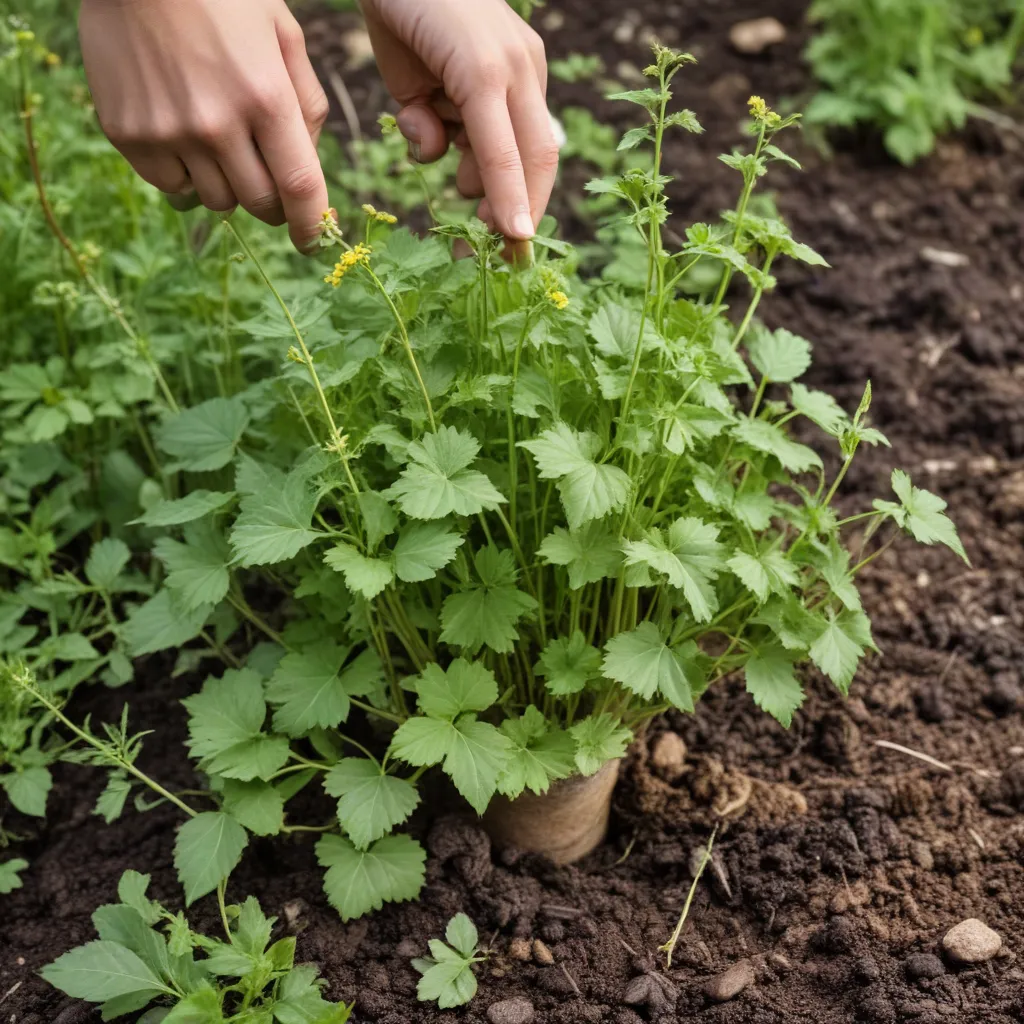
The world of edible weeds is a veritable garden of delight, offering a wealth of culinary possibilities to explore and pair with our wine creations at the Wine Garden Inn. As a hospitality and wine expert, I’m thrilled to share my insights on cultivating these overlooked gems and unlocking their flavor potential to enhance our guests’ dining experiences.
Identifying Edible Weeds
Edible weeds are often dismissed as mere nuisances in the garden, when in reality they can be a treasure trove of unique flavors and nutritional benefits. From the peppery tang of purslane to the licorice notes of wild fennel, these resilient plants are waiting to be discovered and appreciated.
One of the key edible weeds I grow in my own garden is dandelion. Often maligned as a pesky weed, the dandelion’s bright green leaves and sunny yellow flowers are actually wonderfully versatile. The leaves can be sautéed or added raw to salads, imparting a slightly bitter yet satisfying flavor. Similarly, plantain is a common lawn weed with broad, ribbed leaves that offer a crunchy, lettuce-like texture when harvested young.
Other edible weeds I cultivate include the delicate, fennel-scented wild fennel, the earthy lambsquarters, and the peppery watercress. Each of these plants brings a unique flavor profile that can be expertly paired with our award-winning wines.
Cultivating Edible Weeds
While many edible weeds thrive with minimal effort, there are a few key considerations to keep in mind when incorporating them into your garden. First and foremost, it’s crucial to ensure that the area has not been treated with any harmful chemicals or pesticides, as these can linger in the soil and compromise the safety of your edible harvest.
To encourage robust growth, I amend my garden beds with nutrient-rich compost and ensure proper drainage. Edible weeds generally prefer well-drained, slightly acidic soil, with a pH range of 6.0 to 7.0. Monitoring soil acidity and making adjustments as needed can go a long way in supporting the healthy development of your edible weed crops.
When it comes to planting, many edible weeds self-sow readily, so allowing some plants to go to seed can ensure a steady supply year after year. For more control, you can also start seedlings indoors and transplant them into your garden beds. Remember to space them appropriately, as some weeds, such as purslane, can spread enthusiastically.
Harvesting Edible Weeds
The key to harvesting edible weeds is to do so at the optimal time, when the plants are young and tender. As they mature, many weeds can become tough or develop a more pronounced, sometimes bitter, flavor. I like to keep a close eye on my garden, regularly inspecting the plants and snipping off the leaves or stems as needed.
When harvesting, it’s important to positively identify each plant to ensure safety. Consult reliable resources, such as field guides or online identification tools, to confirm that what you’re picking is indeed an edible variety and not a look-alike that may be harmful. Once you’ve confirmed the identity, simply snip the leaves or stems with clean, sharp pruning shears or herb snips, being mindful to leave enough foliage for the plant to continue thriving.
Wine Pairing with Edible Weeds
The diverse flavors of edible weeds open up a world of exciting wine pairing opportunities. The peppery notes of watercress, for instance, can be beautifully complemented by the crisp acidity and subtle herbaceous tones of our unoaked Sauvignon Blanc. Meanwhile, the earthy, spinach-like qualities of lambsquarters pair wonderfully with the rich, fruity character of our Merlot.
For the delicate, fennel-tinged wild fennel, I recommend our Estate Rosé, whose refreshing vibrancy and delicate red fruit notes provide a harmonious counterpoint. And the bold, bitter-sweet profile of dandelion greens finds a perfect match in the robust tannins and dark fruit flavors of our Cabernet Sauvignon.
Culinary Applications of Edible Weeds
The versatility of edible weeds extends far beyond simple salads. At the Wine Garden Inn, we love to showcase these unsung heroes in a variety of creative culinary applications.
One of our signature dishes is a wild fennel pesto, which we toss with freshly made pasta and serve alongside our Sauvignon Blanc. The fennel’s licorice notes beautifully complement the wine’s grassy, herbaceous profile, creating a truly memorable pairing.
We also incorporate purslane into our breakfast smoothies, blending its succulent, lemony leaves with yogurt, seasonal fruits, and a splash of our award-winning Chardonnay. The result is a refreshing, nutrient-dense start to the day that delights our guests.
For those seeking a more substantial course, we feature a hearty dandelion green salad with roasted beets, toasted walnuts, and a Merlot-infused vinaigrette. The bitterness of the dandelion greens is expertly balanced by the wine’s rich, fruity notes and the earthy sweetness of the beets.
Nutritional Benefits of Edible Weeds
Beyond their remarkable flavors, edible weeds are also powerhouses of nutrition. Many, like purslane and lambsquarters, are rich in essential vitamins, minerals, and antioxidants. Purslane, for instance, is an excellent source of omega-3 fatty acids, while lambsquarters boasts high levels of vitamins A, C, and K, as well as calcium and iron.
Consuming these nutrient-dense greens not only enhances the gustatory experience but also supports overall health and well-being. At the Wine Garden Inn, we believe in celebrating the abundance that nature provides, and edible weeds are a testament to this bountiful philosophy.
As we continue to push the boundaries of culinary creativity and wine appreciation, I’m excited to see what else the world of edible weeds has in store. From our garden to your glass, we invite you to embark on this flavorful journey with us.
